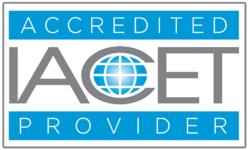March is reading month! Throughout the month on the IEE Blog, Jamie Klebe (one of our awesome Targeted Learning Coaches!) is providing a “Balcony View of Reading” to explore what really works in terms of reading. Throughout this series, Jamie will discuss different reading topics and provide tips and strategies you can use in your classroom.
Be sure to check out the first installment of this series: A Balcony View of Reading, Part 1: Debunking 3 Myths on Independent Reading in the Classroom.
3 Essential Messages about Close and Critical Reading
Message #1: Reading is active.
What happens when we assign reading to students? Many times they run their eyes over the text in a purely receptive nature. What happens if they don’t understand it? “Oh, the teacher will tell me,” is often the reply. The problem with this idea of “receptive” reading is that students believe that if they read the words they will “receive” the information. This view portrays reading as a passive process. Yet, reading is an active process of meaning-making. Engagement with the text is essential. Close and Critical Reading is a means for actively engaging in reading.
Message #2: Reading and writing are reciprocal.
For this discussion, let’s frame Close and Critical Reading around the following questions:
- What does the text say?
- How does the text say it?
- What does the text mean?
- So what?
The first time we read a text, we read it for “the what.” What does the text say? It is after this “read” that we seek to summarize. This is our first check for understanding. Oftentimes, with complex text, it takes more than this initial “read.” However, this is where most students and even teachers stop.
In order to penetrate the surface of the text, we must ask ourselves, how does the text say it? Or, what techniques of craft and structure does the author use in the text? Understanding the choices that authors make in crafting their text is critical for writing well. When students are taught to analyze the craft and structure of the text, they are able to make choices as writers themselves. Oftentimes, this is called “reading like a writer.”
Taking it even further, “What does the text mean?” This is the territory of themes, perspectives, author’s purpose, etc. When students are able to dig deeply into the text, they can then ask themselves, “So what?” Why do I care? What does this mean to me? Students then develop the ability to connect themselves to the power of ideas and to contextualize themselves within a greater worldview.
Tip: One way to introduce students to Close and Critical Reading is through visuals, before text. To get started, check out these 10 Intriguing Photographs to Teach Close and Critical Reading from The New York Times.
Message #3: Reading is power.
According to Fisher and Frey in their book, Teaching Students to Read Like Detectives, “Access to information in the absence of critical thought is a dangerous recipe.” This is so true. The mind boggles at how much information is out there — the good, the bad, and the ugly. So, how might our kids sort through it and make sense of it? How will they decide what and whom to believe? These are important questions for our society.
Knowledge is power. And one of the keys to access knowledge is through the ability to read and write. Moreover, the capacity to think critically about what they’ve read is an essential skill our students must master in order to succeed in the modern information age.

